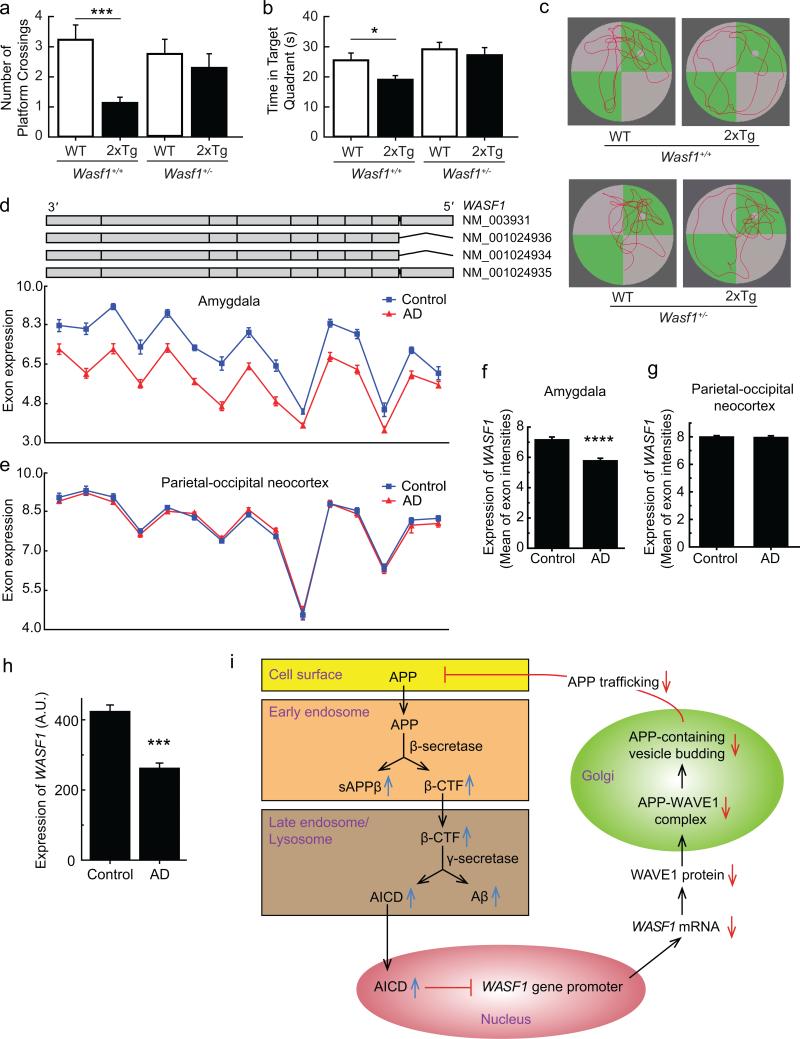Figure 4.
Behavioral consequence and clinical relevance of WAVE1 downregulation, and a model for negative feedback regulation of Aβ production. (a–c) WT (non-Tg) (Wasf1+/+, n = 17; Wasf1+/–, n = 15) and 2xTg (tg/+) (Wasf1+/+, n = 15; Wasf1+/–, n = 10) AD mice (7 month-old, males) were analyzed in the Morris water maze. The number of platform crossings (a) and time spent swimming in the target quadrant (b) were measured (mean ± SEM). ***P < 0.001, *P < 0.05, two-tailed t-test. Representative swim paths recorded during the probe trial (c). (d–g) WASF1 exon expression profiles (d, e) and the mean value of the exon intensities (f, g) from the amygdala (d, f) or the parietal-occipital neocortex (e, g) in 19 AD cases and 10 controls. Each red triangle or blue square represents least squares mean expression of an exon in AD or control tissues, respectively. The upper part in d shows the structure of the four WASF1 isoforms retrieved from the UCSC browser. Mean ± SEM. ****P < 0.00001, one-way ANOVA. (h) Differences in WASF1 transcript expression between 173 AD cases and 187 controls in an independent publicly available dataset23. Mean ± SEM. ***P < 0.001, one-way ANOVA. (i)Proposed model of negative feedback circuit. The processing of APP in the amyloidogenic pathway increases Aβ and AICD. AICD negatively regulates WASF1 gene promoter activity. Downregulation of WAVE1 inhibits the trafficking of APP from the Golgi apparatus to the cell surface and endosomal membranes, resulting in reduced production of Aβ. Colored backgrounds indicate different subcellular compartments.

